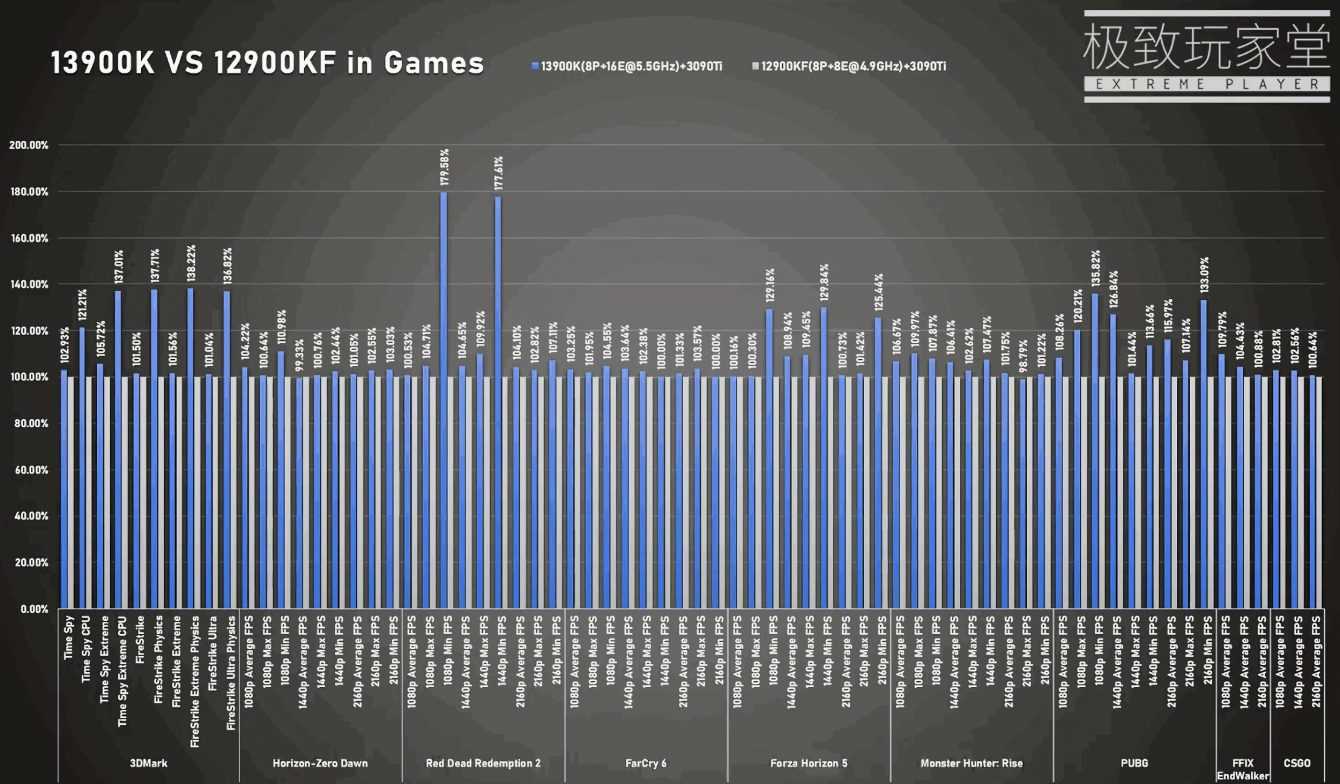
Intel i9-13900K “Raptor Lake” ES Improves Minimum Game Frame Rates by 11-27% over i9-12900KF
See “Raptor Lake”. 13th Generation Intel Core shaping up to be another line of leading desktop processors, with an engineering champion recording significant increases in minimum gaming frame rates (see here for more info) over its predecessor 12th Gen Core i9-12900K “Alder Lake”.
Extreme Player, a tech-blogger on Chinese video streaming site Bilibili, has posted a comprehensive gaming performance review of an i9-13900K engineering champion covering eight games across three resolutions, comparing it to a retail i9-12900KF. Games include CS: GO, Final Fantasy IX: Endwalker, PUBG, Forza Horizon 5, Far Cry 6, Red Dead Redemption 2, Horizon Zero Dawn, and the synthetic 3DMark benchmark. Both processors were tested with a graphics card GeForce RTX 3090Ti, 32GB of DDR5-6400 memory and a 1.5 kW power supply.
Details on the new Intel i9-13900K ES Intel i9-13900K ES “Raptor Lake”
L’i9-13900K ES shows a 1% to 2% performance advantage in 3DMark graphics tests, but an incredible gain from 36% to 38% in CPU-intensive tests of the suite. This is explained not only by the per-core performance increase of both P-cores and E-cores, but also by the addition of 8 more E-cores. Although the same “Gracemont” E-cores are used in “Raptor Lake”, the size of the L2 cache per E-core cluster has been doubled.
Horizon Zero Dawn sees a frame rate increase from 0.7% to 10.98%. There are some anomalous increases in the 70% frame rate in RDR2, discounting that, we still see a 2-9% increase. FC6 registers modest increases of 2.4%. Forza Horizon 5, PUBG, Monster Hunter Rise, and FF IX each report a significant increase in minimum framerate, well over 20%. The graph below shows the highlight of these tests, significant increases in minimum frame-rates. On average between tests, the i9-13900K ES exhibits a minimum FPS gain of 11.65% at 4K UHD; 21.84% increase at 1440p and 27.99% increase at 1080p.
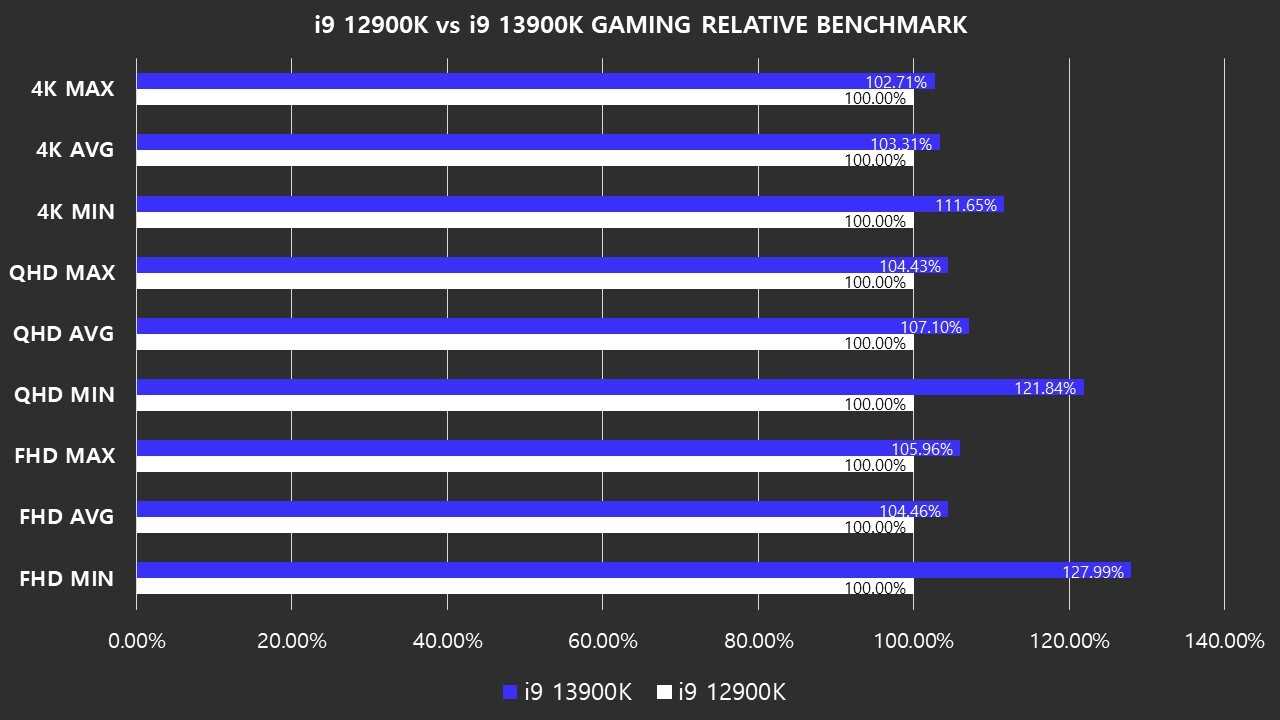
Test results
A big caveat with all of these tests is the CPU clock speeds. Engineering champions don’t tend to come with the clock speeds or boosting behavior of retail processors. So they don’t properly reflect the final product, albeit some chip ES can be equipped with unlocked multipliers. In this test, the i9-13900K ES was set at a maximum P-core clock speed of 5.50 GHz all-core. It was assumed that 5.50 GHz was the chip’s maximum boost frequency at retail and compared to an i9-12900KF that boosts up to 5.20 GHz for P-cores, but ran at 4.90 GHz all-core.
The i9-13900K ES was also subjected to energy consumption test, where it recorded a significant gaming power spike compared to the i9-12900KF at retail. A retail i9-13900K will likely have lower power consumption than shown here. This is because it will follow the typical boosting behavior of retail chips at stock frequencies, compared to an ES that has been specified to run at a certain frequency.
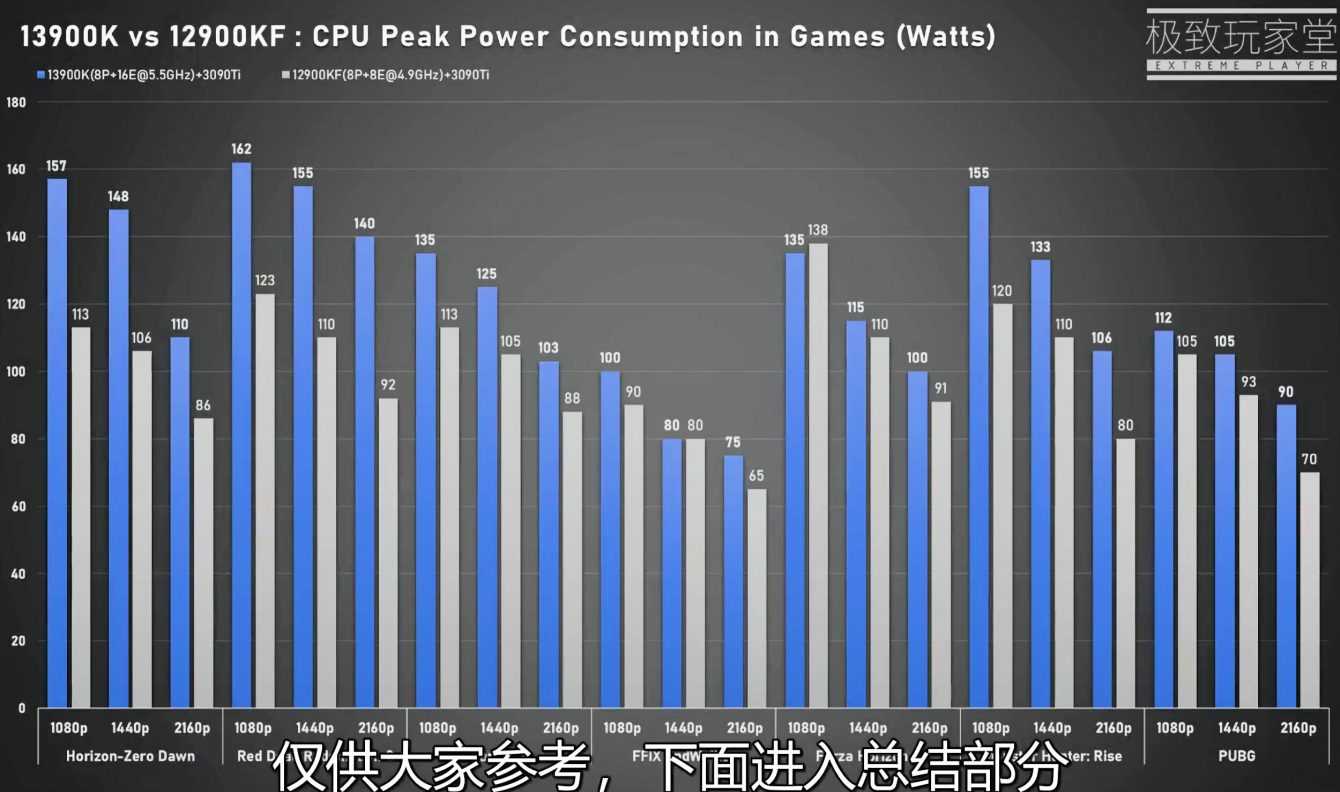
Ready to launch
Intel prepares to launch its processor family “Raptor Lake”13th generation in the second half of 2022. This period could also see rival AMD introduce its Ryzen 7000“ Zen 4 ”processors. “Raptor Lake” combines 8 “Raptor Cove” P-cores with 16 “Gracemont” E-cores and additional L2 cache for both types of cores. The I / O of these chips should be similar to “Alder Lake” and therefore are built for the same LGA1700 platform.
And you? what do you think of these new ones processori Intel i9-13900K “Raptor Lake” ES 13th generation? tell us yours below in the comments and stay connected on TechGameWorld.com, for the latest news from the world of technology (and not only!).
L’New Intel i9-13900K “Raptor Lake” ES article comes from allotek.











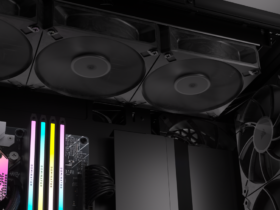
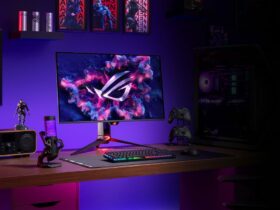


Leave a Reply
View Comments